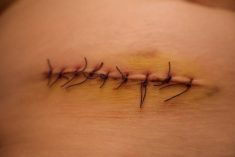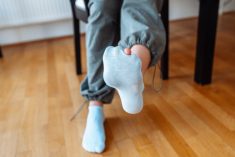Last issue I wrote about the preparation and potential “pre-hab” strategies I recommend to individuals waiting or pursuing a joint replacement surgery. Now it’s time to explore what to do after a joint replacement to support optimal recovery.
Regardless of which area has been replaced or operated on, joint replacement surgeries are often relatively quick procedures and most individuals do not spend long in hospital. In many cases, surgeons and post-op teams will want you to walk away from the surgery.
In the early stages of post-op recovery, there are some important limitations to mobility to allow the incision site to heal. This often takes one to two weeks. In this time, the recommendation is often to begin gently challenging the range of motion in the joint, in ways that do not irritate the incision. Along with beginning to move the replaced joint, I often also recommend moving the joints above and below the affected area, to help circulation move through the entire area and keep the soft tissues moving and prepared for the next stages of rehabilitation.
Read Also

Gentle treatments for pain in the neck
Heading toward year-end, people unknowingly tense up against the cold and busyness, causing neck pain that can often be treated with appropriate support and gentle mobility, athletic therapist Kathlyn Hossack says.
It is a good idea to employ cryotherapy (ice or cold-water therapy) in the early stages of post-op care. Depending on the area, renting a cryotherapy machine is often recommended — or simply using ice packs at home or cold water in a tub if accessible. Cold helps to calm pain responses and quell inflammatory responses. I recommend icing the area for 10 minutes at a time, a few times a day, for the first few days up to a week after surgery.
Movement recommendations in the first couple of weeks after surgery include bending and straightening the joint slowly and mindfully, and rotating the joint (if applicable) slowly and mindfully, while in a seated or laying-down position. Your surgeon will often send you home with a list of movements to begin with. It’s very important that you follow this movement protocol to ensure the joint heals well and your mobility returns as quickly as possible. Movement not only ensures the joint recovers well; it also helps to minimize inflammation, decreases pain and can improve our mental/emotional states during the time after surgery before we are back to our normal lives.
Once the incision has healed, I strongly recommend seeking some manual therapies like massage through a massage therapist, athletic therapist or physical therapist or alternatively, committing to some do-it-yourself manual therapy on the scar. Just because an incision has closed doesn’t mean healing has ended. Scars of any kind can wreak havoc on long-term mobility. Moving the skin and the scar itself through gentle massage helps to ensure the connective tissues and soft tissues do not become impeded by the scar tissue. If you’re working the area yourself, use an oil-based product (even olive oil or coconut oil can do the trick) and, with mild to medium pressure, work the oil in all directions into the incision site. You can use friction, moving your fingers perpendicularly, along the length of the scar to help mobilize the tissues and increase circulation in the area. This is something I recommend doing daily and seeking professional support often where accessible.
Keep it moving
Once your incision has healed and your mobility, immediately post-op, has returned, it becomes very important to begin moving in weight-bearing positions and strengthening the area more directly. Where possible, it’s valuable to have the insight and guidance of a physical rehabilitation and/or exercise-based professional, such as a physiotherapist, athletic therapist or kinesiologist. One of the biggest issues I find individuals run into after a joint replacement surgery is playing it too cautiously, not challenging themselves to move more or challenging the affected area. It’s hard to know on our own what is safe to push through and when to do less. We can often become apprehensive toward movement, especially if we’ve had pain in the area for an extended period leading up to joint replacement. Working with an allied health care professional that can objectively challenge you and support you in appropriate recovery is important, and often this can even be accessed online if there isn’t an option local to you. Many hospitals or clinics offer group movement classes tailored specifically to joint replacement rehabilitation as well.
In my opinion, many patients wait too long to begin rehabilitation after surgery. The common recommendation is to wait six to eight weeks post-op before seeking any professional care other than surgical follow-ups. Lots must be done in those early weeks to set the stage for long-term quality of life — much of which is best served by an allied health care professional’s guidance. Whether it’s supporting you in appropriate pain management, early guidance in mobility and strength practices, incision site healing or scar tissue manual therapy, these progressions begin in those early weeks and become harder to get a handle on the longer we wait.
Most patients who receive joint replacement surgery can expect to be moving well and returning to normal life within a few months of surgery, if not much sooner. While complications can certainly happen, joint replacements are quite common and respond very well to rehabilitation.















